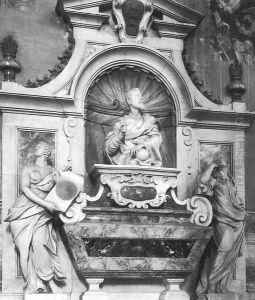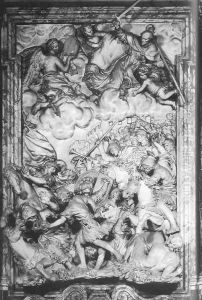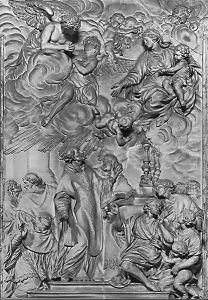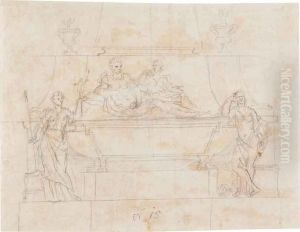Giambattista Foggini Paintings
Giambattista Foggini was an Italian sculptor and architect, known as one of the leading artists of the Baroque period in Tuscany. Born on April 25, 1652, in Florence, Foggini showed artistic talent at an early age. He studied under Antonio Montauti before moving to Rome at the age of 17 to study under the prominent sculptor and architect, Gian Lorenzo Bernini, whose influence would be pivotal in Foggini's development as an artist.
Foggini's early work in Rome earned him recognition, and he quickly became known for his ability to blend dramatic movement and emotional intensity in his sculptures, characteristics that were hallmarks of the Baroque style. After a decade in Rome, he returned to Florence, where he was appointed court sculptor to the Medici family, the ruling dynasty of Tuscany. This position provided him with numerous commissions, and he became the leading sculptor in Florence, influencing the artistic scene significantly.
As the court sculptor and architect for the Medicis, Foggini was responsible for creating a range of works, from monumental sculptures to small, intricate decorative objects. His architectural works included the design and renovation of several buildings and chapels in Florence and its surroundings. He is particularly noted for his bronze and marble sculptures, which exhibit a masterful combination of dynamism and delicacy. Among his notable works are the monument to Galileo in the Basilica of Santa Croce and the Chapel of the Princes in San Lorenzo, which he completed after the death of architect Matteo Nigetti.
Foggini's work is characterized by its elaborate detail and the expressive intensity of the figures he sculpted. His contribution to the Baroque style extended beyond Florence and influenced the artistic developments in the region. He remained active in Florence until his death on April 12, 1725. Today, Foggini's legacy lives on, and his works are considered prime examples of Baroque art in Italy, with his sculptures and architectural designs still admired for their craftsmanship and artistic merit.



















